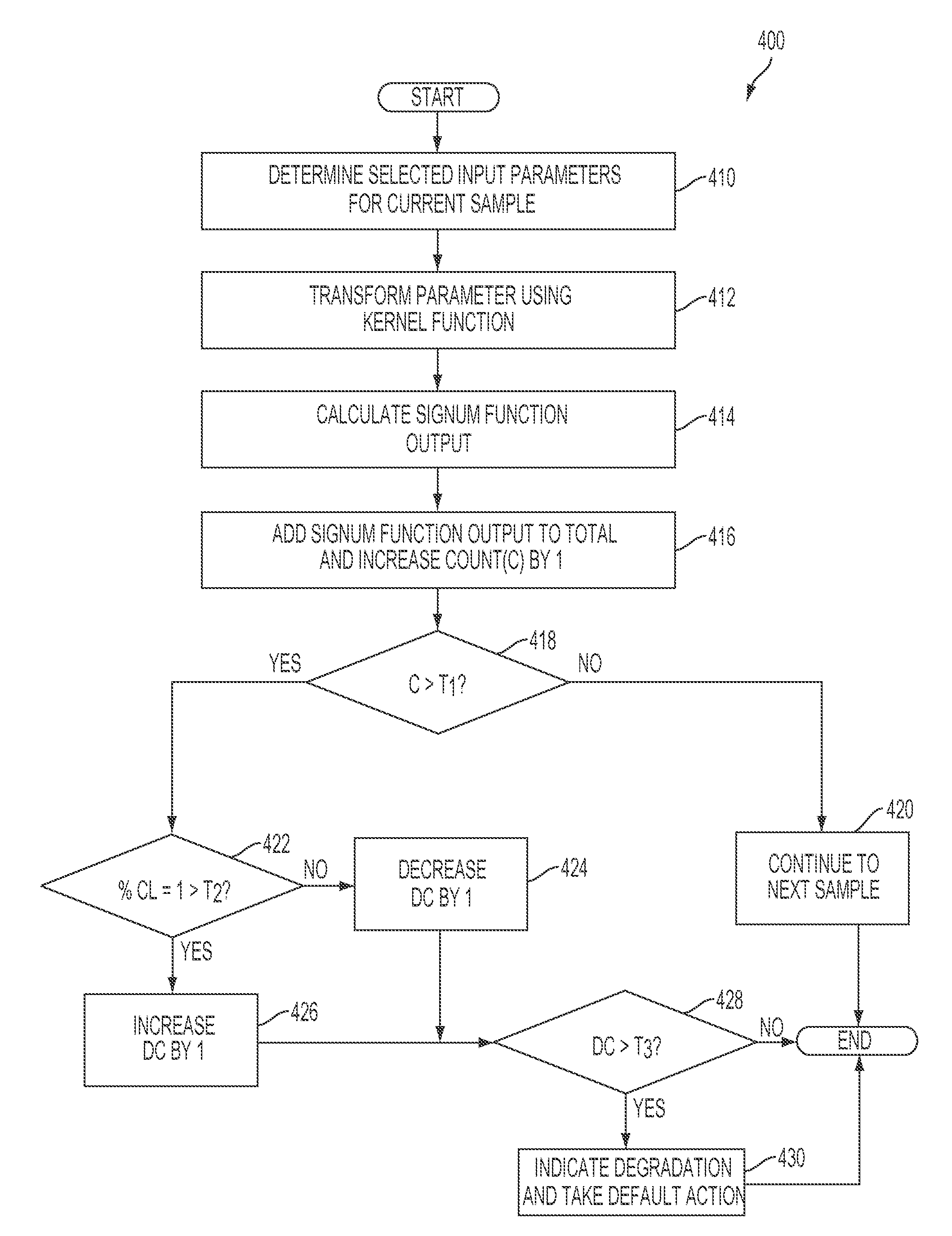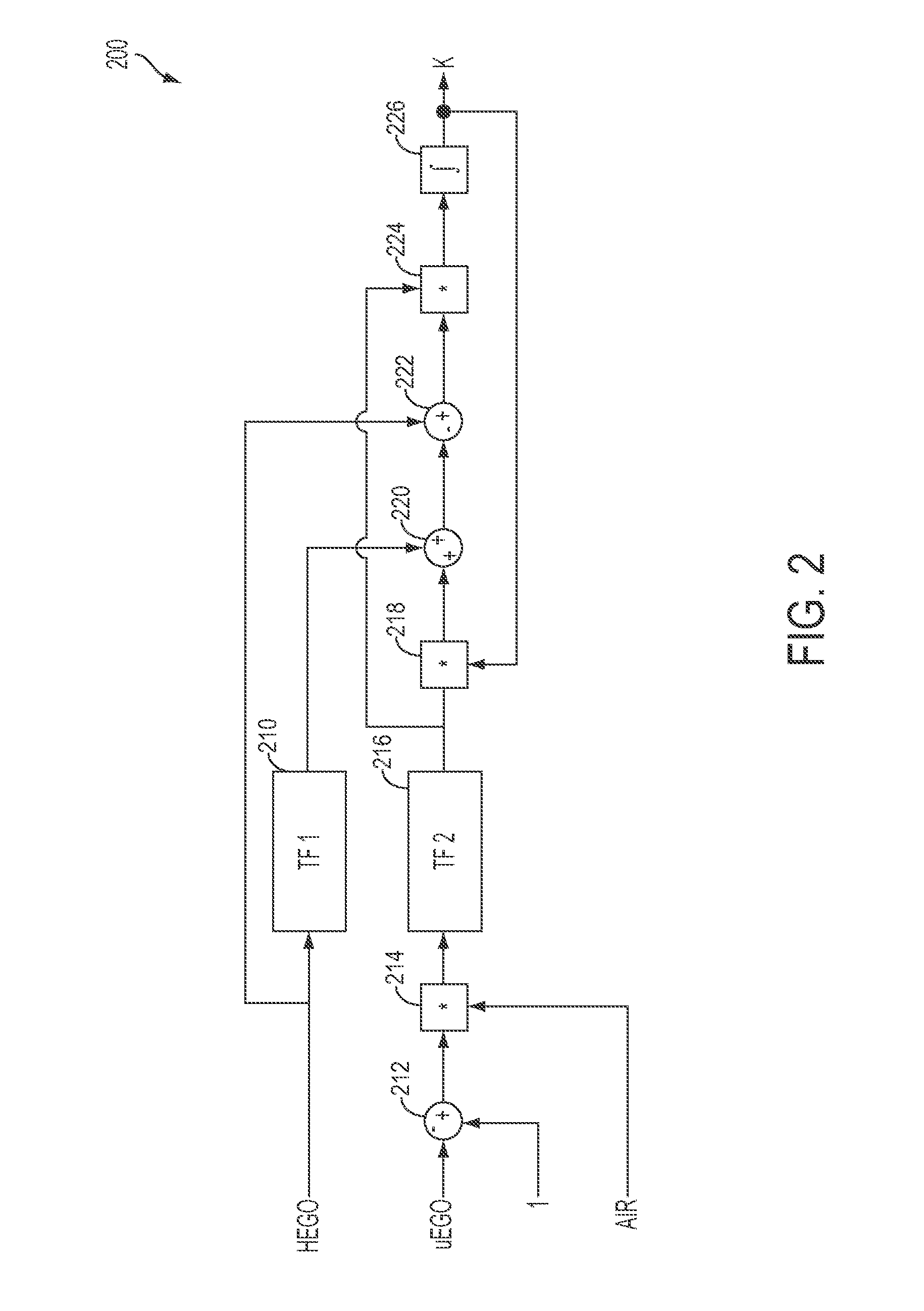Engine catalyst diagnostics
a catalyst and engine technology, applied in the direction of machines/engines, instruments, computing models, etc., can solve the problems of requiring extensive windowing functions and requiring diagnostic accuracy, and achieve the effects of simple calibration, modest training requirements, and high accuracy
- Summary
- Abstract
- Description
- Claims
- Application Information
AI Technical Summary
Benefits of technology
Problems solved by technology
Method used
Image
Examples
Embodiment Construction
[0013]A support vector machine (SVM) may be used by a catalyst monitor to predict catalyst function. The SVM may be trained using pre-classified, known input parameters. During operation of a vehicle under selected conditions, various unclassified input parameters may be fed into the trained SVM model, and after a pre-defined number of samples have been classified, the total of each classification may be compared to a threshold to determine whether or not the catalyst is functioning. As example vehicle system including a catalyst is depicted in FIG. 1. Example control routines for determining an input parameter and operating the catalyst monitor are shown in FIGS. 2-4.
[0014]FIG. 1 shows a schematic depiction of a vehicle system 6. The vehicle system 6 includes an engine 10 having a plurality of cylinders 30. The engine 10 includes an intake 23 and an exhaust 25. The intake 23 includes a throttle 62 fluidly coupled to the engine intake manifold 44 via an intake passage 42. The exhaus...
PUM
 Login to View More
Login to View More Abstract
Description
Claims
Application Information
 Login to View More
Login to View More - R&D
- Intellectual Property
- Life Sciences
- Materials
- Tech Scout
- Unparalleled Data Quality
- Higher Quality Content
- 60% Fewer Hallucinations
Browse by: Latest US Patents, China's latest patents, Technical Efficacy Thesaurus, Application Domain, Technology Topic, Popular Technical Reports.
© 2025 PatSnap. All rights reserved.Legal|Privacy policy|Modern Slavery Act Transparency Statement|Sitemap|About US| Contact US: help@patsnap.com



